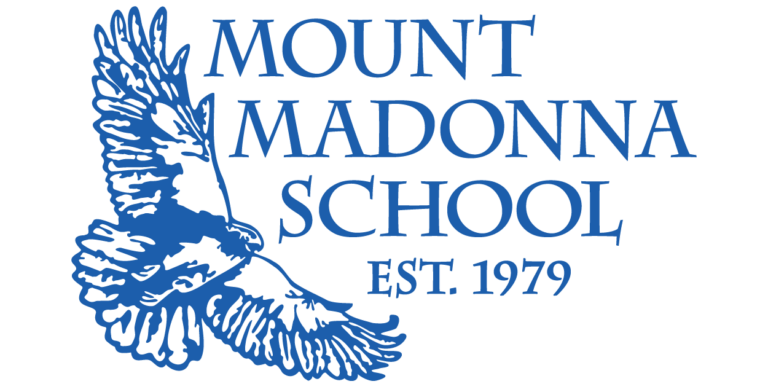 On a recent sunny morning at Santa Cruz’s Natural Bridges State Beach, some 30 visitors to the beach were Mount Madonna School (MMS) students and parents taking part in LiMPETS (Long-term Monitoring Program and Experiential Training for Students), an environmental monitoring and education program that encourages participation by ‘citizen scientists.’
On a recent sunny morning at Santa Cruz’s Natural Bridges State Beach, some 30 visitors to the beach were Mount Madonna School (MMS) students and parents taking part in LiMPETS (Long-term Monitoring Program and Experiential Training for Students), an environmental monitoring and education program that encourages participation by ‘citizen scientists.’
“I want the kids to see that they can do ‘real’ science,” says James “PD” Rohan, MMS middle school math and science teacher, “that they can contribute useful data and have fun doing it.” The event represented Mount Madonna’s third year participating in this long-term monitoring study (now in its tenth year).
 On September 22, the MMS group came to assist researchers in finding and counting the numbers of Pacific mole crabs (Emerita analoga) along sections of the shoreline. Using flags and rope, the group marked off a 50-meter stretch of shoreline, and then, dividing into smaller working units, took core samples at one-meter intervals along a perpendicular iine until they reached the water’s edge.
On September 22, the MMS group came to assist researchers in finding and counting the numbers of Pacific mole crabs (Emerita analoga) along sections of the shoreline. Using flags and rope, the group marked off a 50-meter stretch of shoreline, and then, dividing into smaller working units, took core samples at one-meter intervals along a perpendicular iine until they reached the water’s edge.
“It was cool to be like an actual scientist and collection information,” says seventh grader Phoebe Grant. Students learned that mole crabs are substrate filter feeders in the shallows, and ‘lodging’ in the sand and wait until the tide comes back in. The information they gathered will be used by biologists to answer questions about coastal ecology.
 To help with identification, researchers showed students photos depicting male and female crabs, females with eggs, and juveniles. The MMS students found an average of about three crabs per core sample. Students used calipers to measure the body length of the tiny crabs they found, which ranged in size from 10mm to 50mm.
To help with identification, researchers showed students photos depicting male and female crabs, females with eggs, and juveniles. The MMS students found an average of about three crabs per core sample. Students used calipers to measure the body length of the tiny crabs they found, which ranged in size from 10mm to 50mm.
“I enjoyed hanging out with friends and learning that sand crabs come in many sizes,” says sixth grader Cam Diskowski. “Some were about five centimeters long and some were almost an inch! Measuring them wasn’t easy, because you had to try and hold them still. We found lots of crabs closer to the water and almost zero in the dry sand.”
“We found a lot more crabs than last year,” adds Gracie Howley, a seventh grader and returning participant.
Sixth and seventh grade students will again have the opportunity to participate in this monitoring effort: Rohan is taking his students to Asilomar Beach in Monterey County on October 3, to take additional core samples and count mole crabs for LiMPETS.
“This research activity brought many families together at one of the most beautiful beaches in California,” notes Rohan. “This contributes to building a wonderful sense of community and appreciation for the natural environment.” To follow up on the data they collected at the beach, Rohan says students will be going online during science class and comparing what they collected with information gathered by other local school groups.
 “Through this monitoring effort, these citizen scientists are establishing a web-linked database from which we can better address current and future impacts,” explains a spokesperson for LiMPETS. “The LiMPETS network connects teachers, students, and the community to the ocean, involves them directly in a real scientific endeavor, and increases their awareness of, and interest in, the marine environment.”
“Through this monitoring effort, these citizen scientists are establishing a web-linked database from which we can better address current and future impacts,” explains a spokesperson for LiMPETS. “The LiMPETS network connects teachers, students, and the community to the ocean, involves them directly in a real scientific endeavor, and increases their awareness of, and interest in, the marine environment.”
#####
Contact: Leigh Ann Clifton, Marketing & Public Relations
Nestled among the redwoods on 355 mountaintop acres, Mount Madonna is a safe and nurturing college-preparatory school that supports students in becoming caring, self-aware and articulate critical thinkers, who are prepared to meet challenges with perseverance, creativity and integrity. The CAIS and WASC accredited program emphasizes academic excellence, creative self-expression and positive character development. Located on Summit Road between Gilroy and Watsonville.






